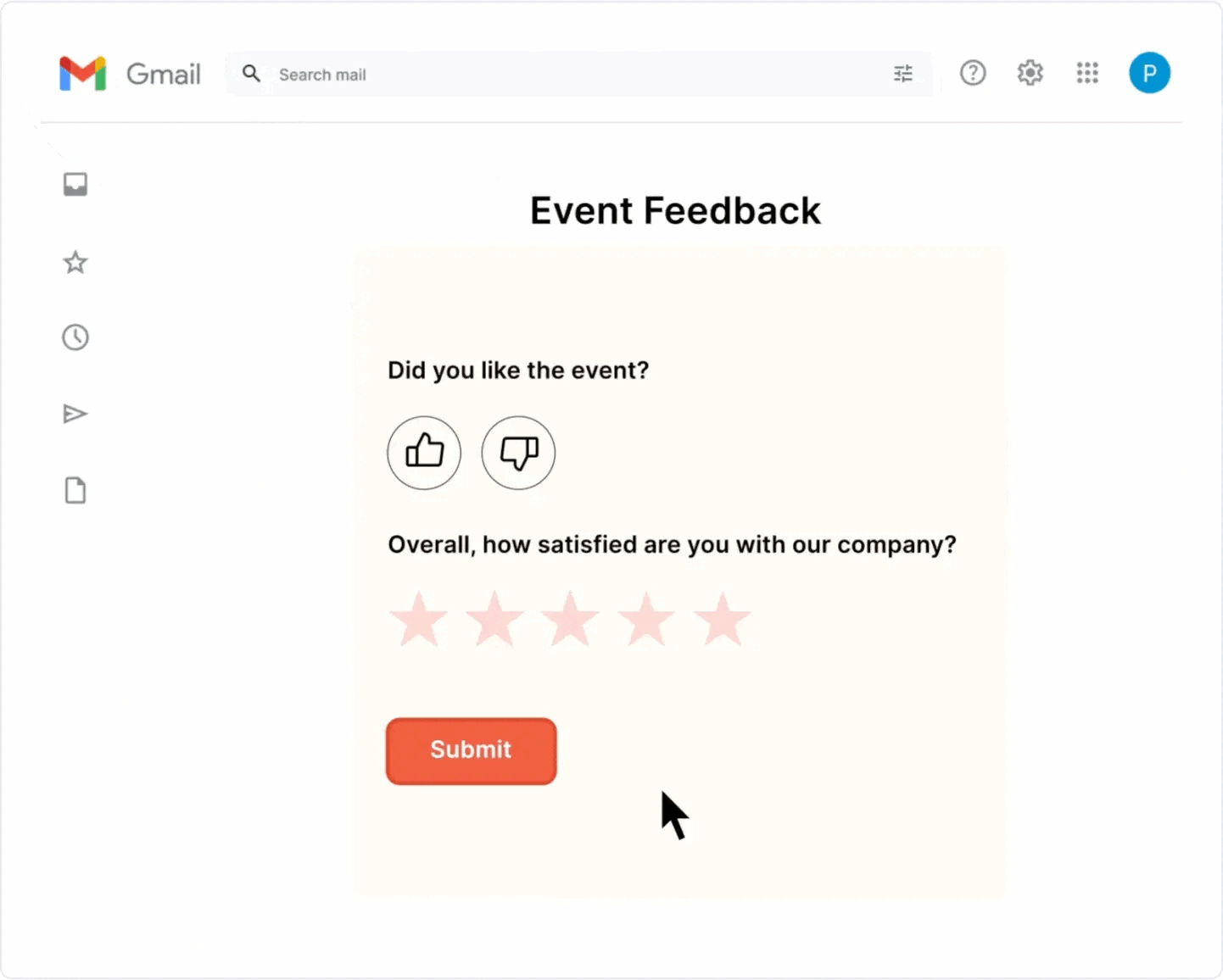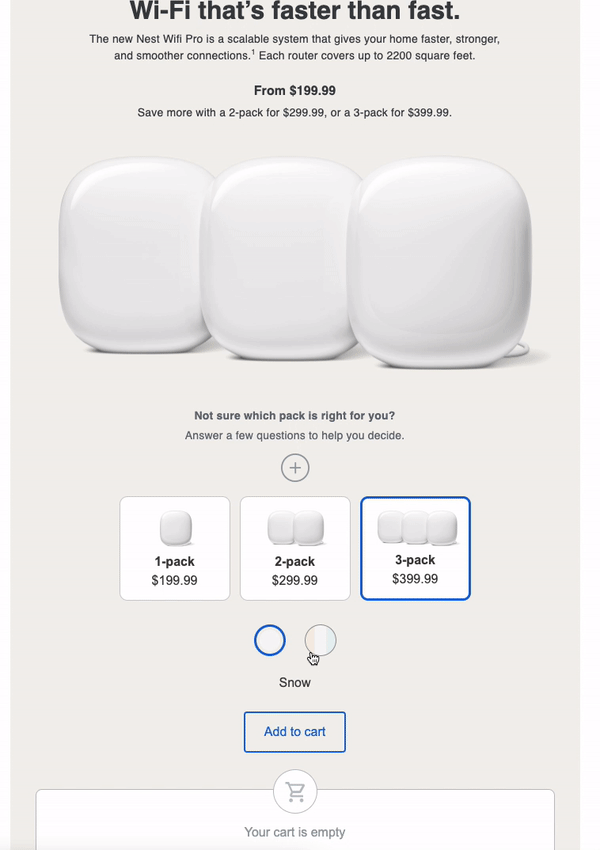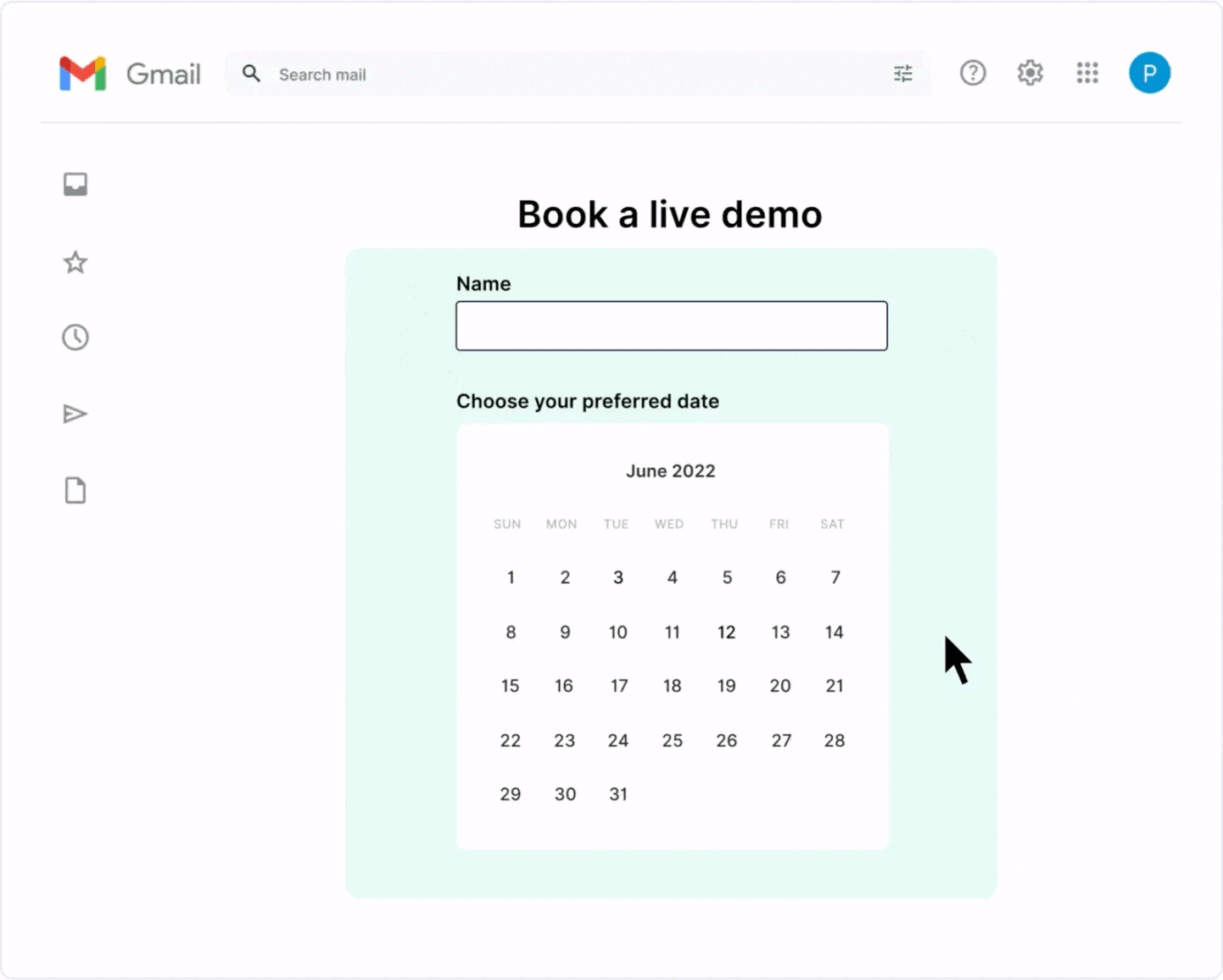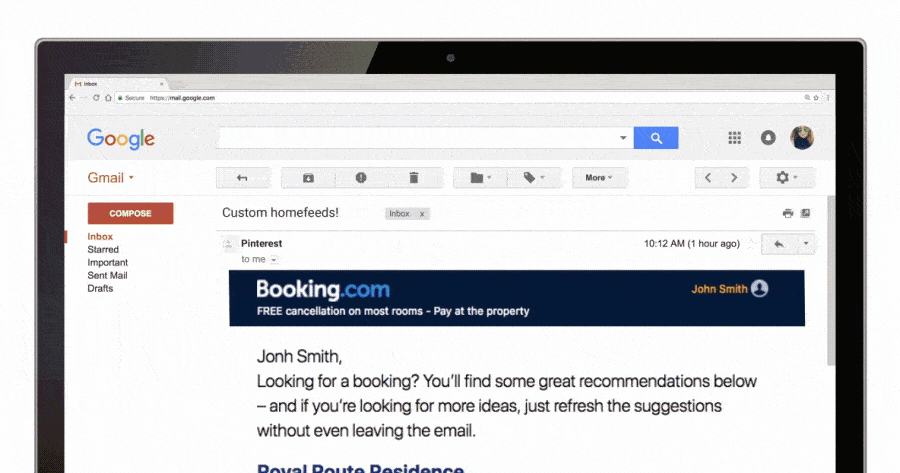What is AMP for Email?
AMP (Accelerated Mobile Pages) is Google’s tech designed initially for speeding up mobile web pages. But now, it’s entering our inboxes, transforming static emails into interactive experiences. Imagine filling out a survey, browsing a product carousel, or booking an appointment - all without leaving your email. AMP for emails brings that to life, making emails dynamic and actionable, right where your audience is already engaged.
Here are some Use Cases:
Interactive forms for collecting feedback and data.
Live product galleries showcasing available stock.
Direct booking systems for events or services.
Dynamic updates (e.g., latest offers, live pricing).
It’s all about removing friction - no redirects, no extra steps.
How Does AMP for Email Work?
AMP for email isn’t just magic; it’s built on a subset of AMP HTML designed for speed and interactivity. It uses elements like <amp-carousel> for product slideshows and <amp-form> for capturing customer inputs directly. These components create a seamless experience but come with their own rules and requirements.
AMP emails must pass validation before they’re sent - meaning you can’t just fire off any code you like. It’s a strict process designed to ensure your email’s functionality and security.
Email clients that support AMP (like Gmail, Yahoo Mail, and Mail.ru) render these features. For others, you’ll need an HTML fallback version. If you’re using clients like Apple Mail or Outlook, AMP won’t display, so having a plan B is a must.
AMP relies on its specific libraries to execute these interactive elements, ensuring speed and efficiency while enhancing user experience. It’s a fantastic tool for brands ready to add depth to their email campaigns but does require a certain level of tech know-how.
We’re not all the way there yet unfortunately
For all its benefits, AMP for email isn’t a one-size-fits-all solution. It comes with limitations that businesses need to consider:
Limited Email Client Support: Only a handful of email clients currently support AMP technology. Brands using it must always build fallback HTML versions for other clients - adding extra work to the mix.
Technical Complexity: Crafting AMP emails isn’t as simple as dragging and dropping elements. It requires developers familiar with AMP HTML, its libraries, and the validation process. It’s a steep learning curve for many teams.
Privacy and Security Concerns: With AMP’s interactive elements collecting user data, some customers might feel wary. AMP’s dynamic nature raises questions about data privacy and how brands handle and secure that data.
Increased Load on Servers: Since AMP components rely on dynamic elements, it places a heavier load on servers and infrastructure, requiring businesses to prepare for potential increases in resource demand.
Validation Hurdles: AMP emails must meet strict validation criteria, and getting them to pass isn’t always straightforward. It’s an additional step that might slow down campaign deployment, especially for teams unfamiliar with the requirements.
The Future of AMP for Email
Despite its challenges, AMP for email has enormous potential. As more email clients begin to adopt this technology, we’ll likely see a surge in dynamic, interactive email content.
What’s next?
Broader Client Support: There’s a push for other major email clients like Apple Mail and Outlook to get on board. If they do, the reach and functionality of AMP emails will skyrocket.
Advanced Personalisation: As AI and machine learning integrate further with AMP, we’ll likely see emails that dynamically change content based on real-time customer behavior and preferences. Imagine an email where the content updates depending on the recipient’s recent browsing history or their preferred time of day for shopping—AMP could make that happen.
More Seamless Integrations: Companies are already working on tying AMP for email with other tools like CRM systems and e-commerce platforms, enhancing cross-channel experiences.
Enhanced Security Features: With privacy concerns being a top priority, future developments in AMP will likely focus on enhanced data protection measures to ensure that customer trust isn’t compromised.
In conclusion, while AMP for email presents both opportunities and challenges, its evolution will likely shape the future of email marketing. Brands that can navigate its technical demands stand to offer customers a truly engaging, interactive experience, bringing value straight to their inboxes.





